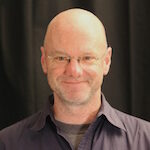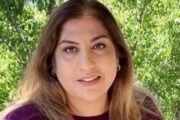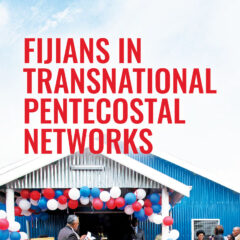The New York Times recently ran a piece on the network of volunteers tracking the drift of flotsam in the Pacific from the earthquake and tsunami that struck Japan last year. The story included a map that plots the likely extent of the 1.5 million tons of floating debris—smashed dinghies, soccer balls, the remnants of fishing docks—that were pulled out to sea when the wall of water raised by the earthquake retreated from ruined cities and villages.
While the real nugget of the article trades on the gleam of humanity in the aftermath of a darkly tragic event (sea kayakers in Washington discovered the remains of an entire bathroom, including a potty-training seat), I was struck by a feature of the map that didn’t figure into the angle chosen by the writer for the Times. Several hundred miles northeast of Hawaii, a deeply shaded circle marks the zone in the Pacific with the largest concentration of debris. The Times map thus highlights a gyre—a swath of ocean where the vagaries of vast currents deposit items that have quite literally traveled from all parts of the world.
That image came to mind while I was in Dubai over the past few days. One of the pleasures of the trip was a visit to a Sunday evening service at King’s Revival Church International, a non-denominational “full Gospel” congregation that rents a fellowship hall at Holy Trinity, an Anglican compound near Oud Metha and Karama, neighborhoods that are populated by some of the millions of working-class expats who keep Dubai’s Las Vegas-meets-Shanghai machinery humming along.
“Joy is in the house!” declared Sister Florence Aviso, the worship leader who had a crowd of roughly 800 on its feet singing praise songs nonstop for over an hour. The church’s Filipino band backed up Sister Aviso that night, but African, Indian and Middle Eastern musicians have their turn during the course of a weekly roster that averages a couple of services a day in nearly half a dozen languages. The English service that I attended was more ethnically eclectic than any other similar event I’ve witnessed; the packed hall included sub-Saharan Africans, South and East Asians and surprisingly robust contingents of Anglos and Arabs.
If the currents of globalization have created cultural versions of the oceanic gyre in the east-central Pacific, Dubai is inarguably one of the most energetic cultural gyres of them all. “It’s mostly a transient population,” Rev. V. Dilkumar, KRCI’s senior pastor, told me the next day. “We have about 9,000 members in Dubai, but no one stays permanently. They return to their own countries sooner or later. ”
Dilkumar is both a reflection of and an exception to the particular regional dynamics behind the phenomenon he sketched. In 1983 he came to Dubai from his native Sri Lanka as an engineer with a British multinational, leaving his family back home. He was soon making plenty of money, but what he described as the dispiriting isolation of Dubai began to wear on him. A textbook tale of a soul’s dark night drove him first to drink, then to a nondenominational church that became the model for his own ministry, which he started in 1991. Unlike most people who end up in Dubai, Dilkumar eventually brought his family to the UAE and put down roots.
Or at least he has become as deeply rooted in the Emirates as an expat can hope to be. More than 80 percent of the population of the UAE is composed of non-citizens—a remarkable statistic that accounts, at least in part, for why the restiveness of the Arab Spring has made barely a ripple here. Bringing to mind American mill villages of the late 19th and early 20th centuries, many of those itinerant workers live in company-owned labor colonies, like the cinderblock housing units opposite Dubai’s huge landfill. Another sight along Al Khail Road is even more jarring for a Western visitor accustomed to the city-state’s glamorous image: behind a high, nearly completed wall stretches a vast graveyard of sand-covered cars, with plenty of luxury models in the mix. Thousands are abandoned each year when their owners’ fortunes sour. In fact, many are towed to the site from the Dubai airport.
Without the rights that come with citizenship, the Russian plutocrat with a flat in the Burj Khalifa is ultimately no more secure in the UAE than the Pakistani workers who clean the Burj’s windows after one of Dubai’s epic dust storms.
Still, the relative tolerance of the UAE’s authoritarian regime makes for some fascinating contradictions. Non-Muslim religious movements like King’s Revival Church are tightly constrained in where and how they can conduct their activities, but if they play by the rules, it’s easy to flourish. The Holy Trinity compound rents worship halls to at least a dozen renewalist groups, including Assemblies of God and Indian Pentecostal Church congregations. And St. Mary’s, also in Oud Metha, is the anchor for a growing Catholic Charismatic community in the Gulf Region.
It’s perhaps not surprising that the main attraction at KRCI is “signs, wonders and miracles”—revival-style spiritual healings that have helped the movement to grow not just in Dubai but also in many of the countries to which its expat congregants have returned. The gyres of the globalized age accumulate and transmit not just cargo containers and economic practices that are (at best) amoral. Also transmitted by the networks of globalization are religious phenomena that, for many, serve as the best medicine for some of the soul-sicknesses peculiar to our unsettled times.
Nick Street was a senior writer with the USC Center for Religion and Civic Culture.







